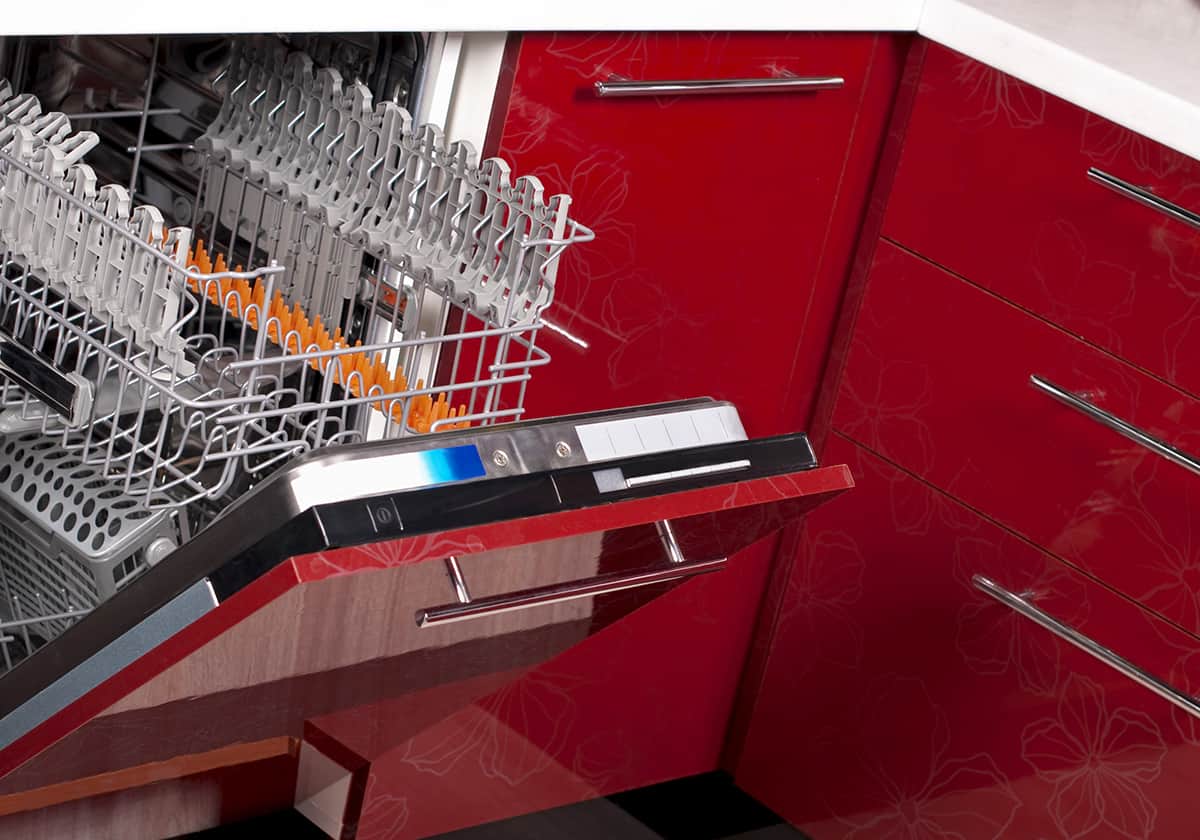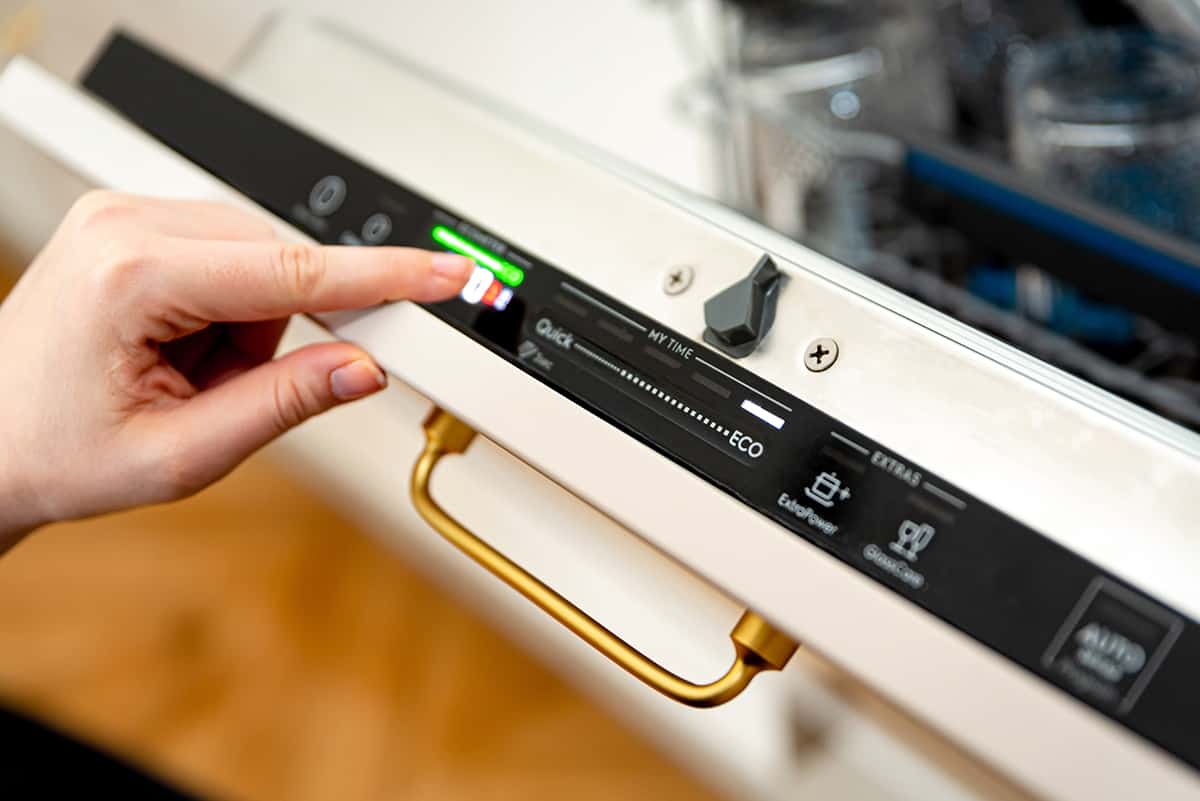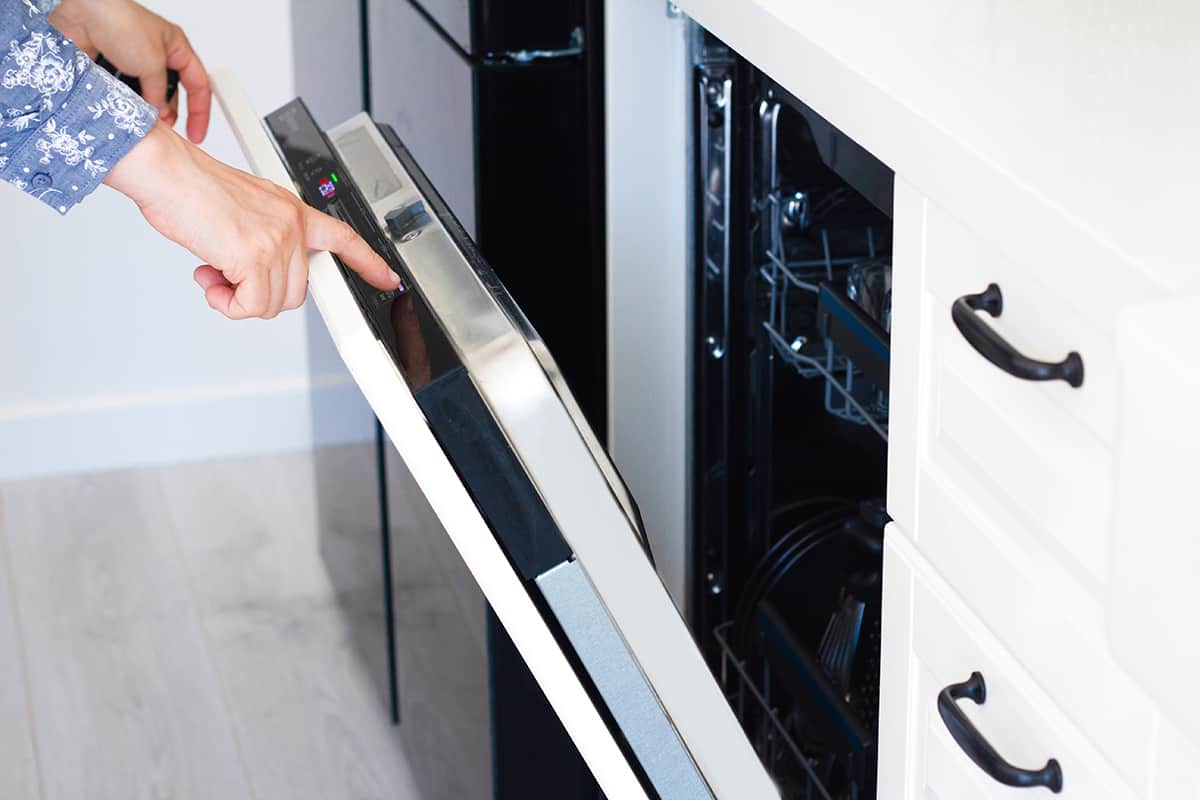Whirlpool is known for making all sorts of high-quality, super-durable household appliances, including dishwashers. But even as reliable as Whirlpool dishwashers are, and they really are reliable, there might come a time when they no longer work like they used to. Luckily, you can resolve the problem most of the time by resetting the dishwasher.
Here is how you reset a Whirlpool dishwasher:
- Turn off the dishwasher
- Unplug the dishwasher or shut off the circuit
- Let the dishwasher rest for 15 minutes
- Restore power to the dishwasher
In this guide, I’ll explain in greater detail how to perform a reset on a Whirlpool dishwasher and when it might be necessary to run a reset, as well as how to run a diagnostic test.
How to Reset Whirlpool Dishwasher (Step-by-step Guide)
Resetting a dishwasher, whether it’s a Whirlpool or not, aims to restore the machine to its factory settings. Not only does it clean the dishwasher’s memory of the ghosts of a thousand past washing, rinsing, and drying cycles, but it will also help identify what sort of mechanical problems your dishwasher is currently facing.
But before we go too deep into why you should reset your Whirlpool dishwasher, let’s check out how you can do it.
Believe it or not, resetting a Whirlpool dishwasher is nearly as simple as turning it off and back on. Here’s how you do it safely:
1. Turn off the dishwasher
Before proceeding, we first need to make sure that the dishwasher is deactivated completely. Press the off button on your dishwasher and wait until all of the control board’s lights turn off. To be safe, give it 5 to 10 seconds before moving on to the next step.
2. Unplug the dishwasher or shut off the circuit
Your dishwasher will continue to receive electricity from a receptacle when it’s plugged in. We want to completely eliminate power to the machine. So, if you have a freestanding dishwasher, unplug its power cord from the wall receptacle.
If your Whirlpool dishwasher is hardwired to your home’s electrical system, you need to go down to your basement and flip the circuit off to your dishwasher. This may interfere with other appliances in your kitchen, but don’t worry—we won’t leave the electricity off for too long!
3. Let the dishwasher rest for 15 minutes
Completely eliminating the flow of electricity into the dishwasher will wipe away its memory cache. Your dishwasher will save every command you input into the machine since the last time you reset it. So, let the machine rest for at least 15 minutes before moving on to the next and final step.
4. Restore power to the dishwasher
After letting the dishwasher rest for 15 minutes, it’s time to restore power to the machine. Plug it back into the wall receptacle or flip on the circuit to the machine.
To see whether the reset process worked, turn the machine back on and try running a test cycle. If the dishwasher can complete a cycle without interruption, you do not have to examine its internal components for signs of wear and tear.
Why Should You Reset a Dishwasher?

There are all sorts of memory and mechanical-related issues that can arise in a dishwasher. Let’s examine each problem individually.
Overloaded memory
Each type you run a wash cycle in your dishwasher, it will save the settings for future use. Cached memory will help your dishwasher figure out how much water it needs to clean your dishes without having to spend minutes detecting the level of filth on your dishes.
However, when the dishwasher has too much stored in its memory, it can begin slowing down. If you notice a significant delay between wash phases, it’s time to reset the dishwasher.
Control board errors
This isn’t referring to the error codes that might show up on the control board’s display. Instead, this is referring to problems associated with pressing buttons on the control board. While filth and debris may cause buttons to get stuck, there could be a memory problem that prevents the control board from detecting inputs.
Long heating times
Whenever you run a wash cycle, the dishwasher needs to fill the tub with water. At the same time, heating elements slowly increase the temperature of the water to a sanitizing level—typically around 140°F. But if it takes longer than usual for the water to heat up (you’ll notice a significant delay between the stop of water intake and the spraying of water through the arm), it might be due to the heat pump not working optimally.
Before opening your dishwasher and testing the pump for continuity, you should first perform a reset to see whether the problem is due to a memory error.
Stuck on a single washing phase
Dishwashers work by running multiple washing phases per cycle. In general, the dishwasher will first fill up with water while mixing the water with detergent. Then the dishwasher will spray the soapy solution all over your dishes. It will start the rinsing phase before ending with a drying phase.
If your dishwasher lost power in the middle of a cycle and regains power, later on, it might not continue where it left off. Instead, it will be perpetually stuck in the phase it was last doing without proceeding. Resetting the dishwasher will instruct it to forget all of its previous commands, allowing it to start a fresh cycle.
How to Run a Diagnostic Test in a Whirlpool Dishwasher

If you tried resetting your dishwasher (and probably tried a second or third time to be sure) without seeing a significant change in cleaning effectiveness or timeliness, then the problem might be caused by a faulty part. Luckily, you don’t have to disassemble the entire dishwasher to inspect each part individually. Instead, you can run a diagnostic test in you Whirlpool dishwasher.
By running the diagnostic test, your dishwasher will examine several of its internal parts to determine which (if any) are faulty. In the end, the dishwasher will display an error code on the control board. You should read the dishwasher’s manual to figure out what each error code means.
So, if resetting doesn’t resolve the problem, you should try running a diagnostic test. Here’s how you do it in Whirlpool dishwashers:
- Turn on the dishwasher.
- Press the heated dry button and the normal button one after the other.
- Immediately press the dry and normal buttons in rapid succession.
- Wait for 10 to 30 minutes for the dishwasher to complete the test.
You’ll know whether your dishwasher has entered diagnostic mode when the control board’s lights begin blinking and when the door is locked. If the door isn’t locked, try repeating the steps above. You probably didn’t press the dry and normal buttons quickly enough after pressing them for the first time.
If that still doesn’t work, you might have to try a different button sequence.
- Turn on the dishwasher.
- Press any 3 buttons on the control board at the same time.
- Press the same 3 buttons at the same time for a second time.
- Wait for 10 to 30 minutes for the dishwasher to complete the test.
If that still doesn’t work, check your manual to figure out what buttons to press to activate the diagnostic mode. Alternatively, you can ask a repairman to do it for you.
How to Tell Whether the Reset Was Successful
While your dishwasher may work like brand-new for the first few days after a reset, you should continue to keep an eye on it for at least 3 days afterward. If it can continue to complete cycle after cycle without interruption, the reset was a success.
Conversely, if the dishwasher still fails to wash your dishes completely or if it gets stuck in a particular phase of the wash cycle, that might be indicative of faulty hardware. In that case, you might need to fix or replace the defective part.






